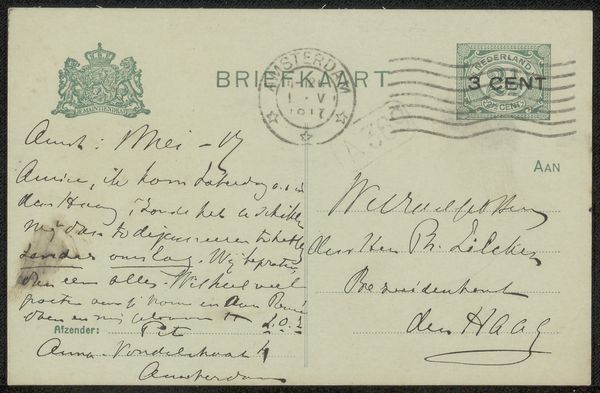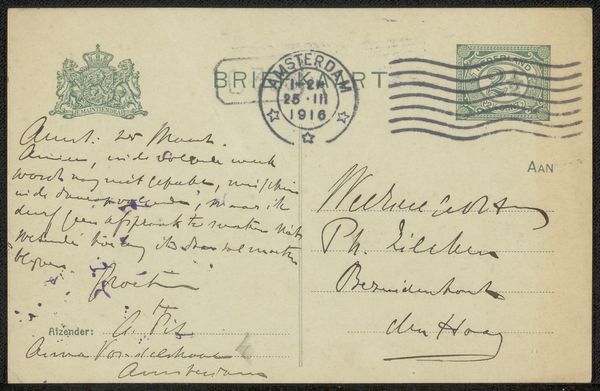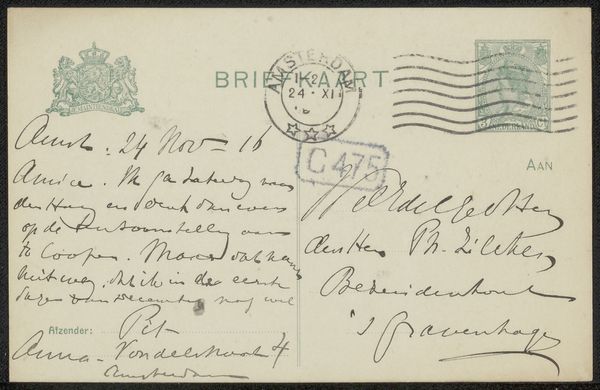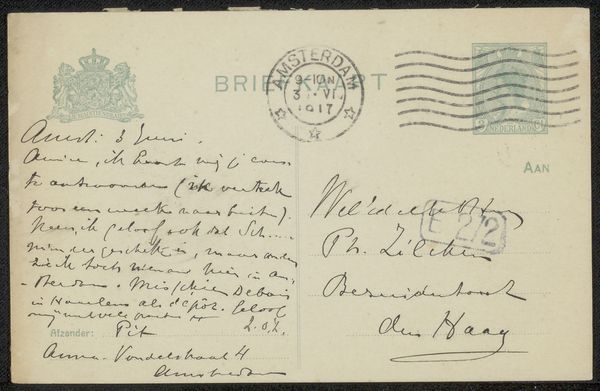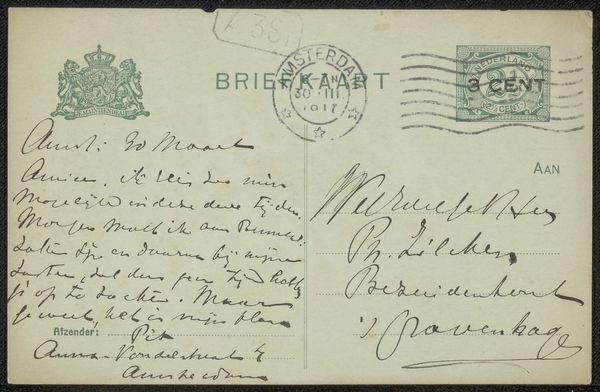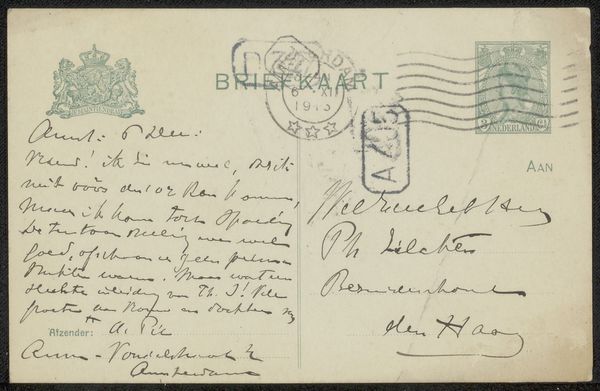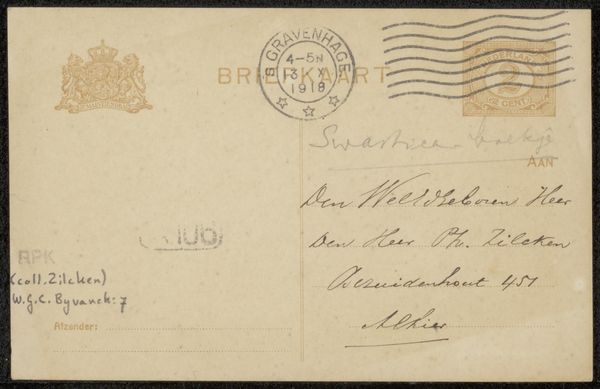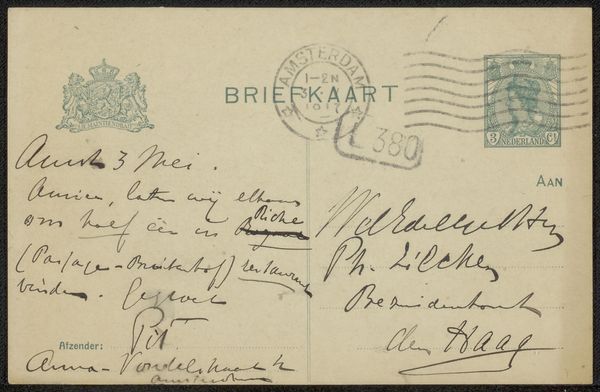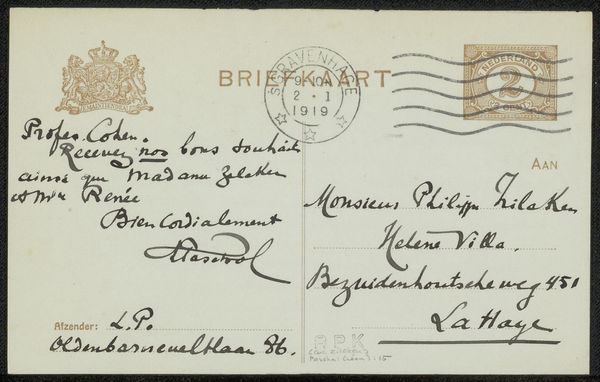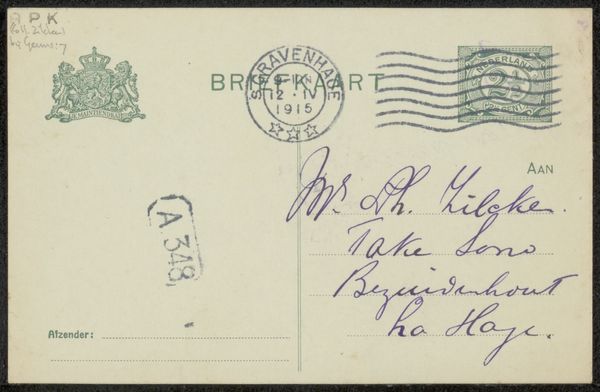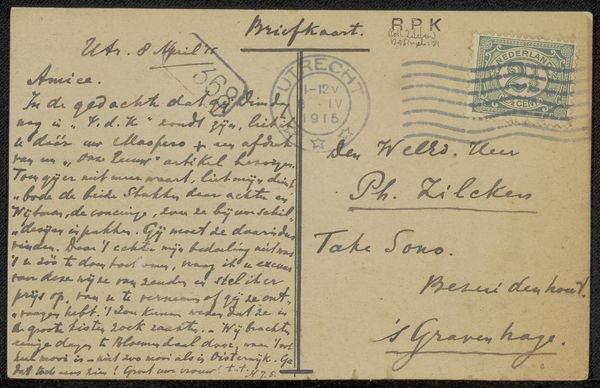
drawing, paper, ink, pen
#
drawing
#
paper
#
ink
#
pen
Copyright: Rijks Museum: Open Domain
Curator: Looking at "Briefkaart aan Philip Zilcken," a postcard created circa 1916 by Adriaan Pit, you are observing a private correspondence, not a typical display piece. It’s made with pen and ink on paper and currently resides in the Rijksmuseum's collection. What impressions strike you initially? Editor: The script jumps out—dense, hurried, but beautifully formed in that old style. I am immediately struck by the writer's urgency. And there's a strong sense of place conveyed simply by the postmarks and stamps. It is very intimate, don’t you think? Curator: Absolutely. It embodies a snapshot of societal connections amidst what, at the time, was a landscape deeply influenced by war. We see how institutions like postal services persevered, connecting individuals when other facets of life were strained. Editor: Note also how the stamps depict emblems of state authority and cultural identity through abstract shapes of waving line. Curator: And it all exists on this small scale, making it feel so immediate, almost as if intercepted on its journey. Adriaan Pit's choice to use a postcard indicates a desire to bridge distance without investing in larger more weighty missives. We get a sense for social values influencing an artist's everyday choices. Editor: Looking closer, there are some additional scribbles along the lower left-hand area. Hard to tell the specific meanings behind it, but there appears to be much care paid toward this missive in all its detailing and inscription, official or more personal. Curator: Indeed, the content, beyond just pleasantries, reveals elements of both public and personal exchanges which were highly affected during that time. The handwriting itself bears the personality and anxieties of the time, reflective of broader society Editor: Such ordinary object becomes extraordinarily eloquent in telling personal narratives. By seeing this little scrap from one person to another from that distance in time we become sensitive again to enduring cultural memory. Curator: Precisely, and the Rijksmuseum’s stewardship ensures these echoes from the past resonate. It becomes a powerful statement about everyday persistence during momentous events. Editor: Yes, indeed. An incredibly modest object offering very grand insights.
Comments
No comments
Be the first to comment and join the conversation on the ultimate creative platform.
